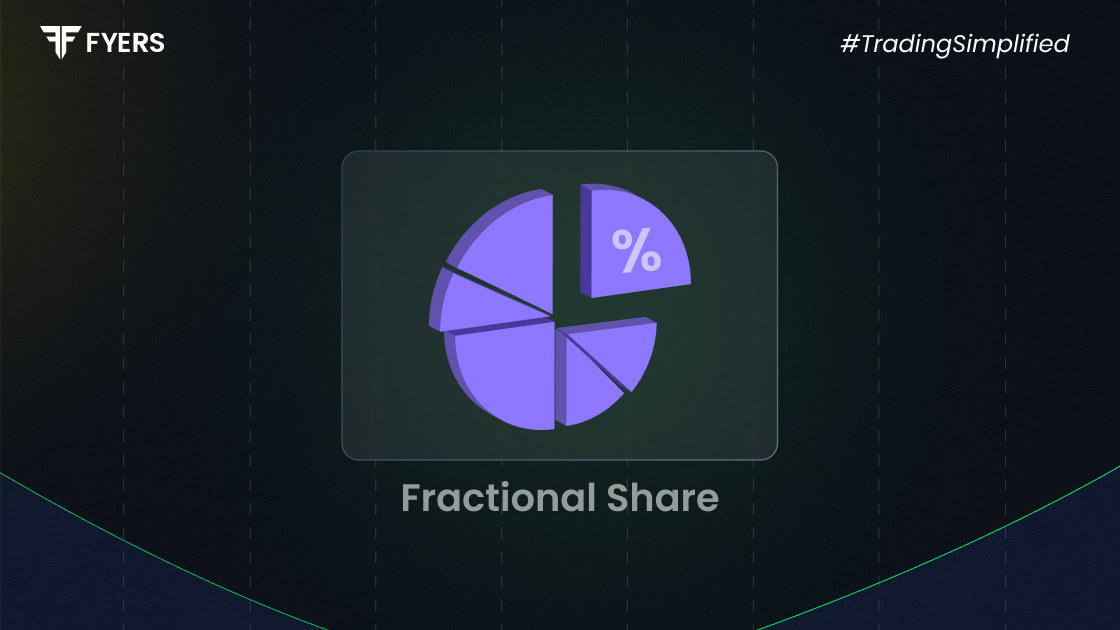

 25 Jul, 2025
25 Jul, 2025
 4 mins read
4 mins read

Investing in the stock market once meant buying whole shares of companies. But today, with rising stock prices and the growth of digital platforms, a new form of investing is gaining popularity: fractional shares. This innovation is especially helpful for new or small investors who want to start early without needing a large capital base.
Let’s explore what fractional shares are, how fractional investing works, where it’s used, and what benefits and limitations it carries.
Fractional shares are exactly what the name suggests—portions of a full share of a company’s stock. Instead of buying one full share, you can buy a small fraction of it, such as 0.5 or 0.25 shares.
For example, if a stock costs ₹10,000 per share and you only have ₹2,000 to invest, fractional investing lets you buy 0.2 of that stock. It opens the door to high-value stocks like Apple, Tesla, or Alphabet without needing to spend thousands upfront.
So, when asking, “What is a fractional share?”—it’s simply a way to own part of a share, rather than the whole, enabling greater flexibility for investors with limited funds.
Fractional investing works through platforms or brokers that enable the purchase and management of partial shares. Here's a basic breakdown of how it works:
Choose a stock: You select the stock you want to invest in.
Decide the amount: Instead of buying by number of shares, you invest based on the amount of money (e.g., ₹1,000).
Broker allocates a fraction: The broker calculates how much of the share you get based on its current market price.
You hold ownership: Even though you don’t own a full share, you are entitled to your portion of gains, losses, and in some cases, dividends.
This model is particularly useful in global stock investing, where many US-listed shares are priced significantly higher than those in Indian markets.
Fractional trading is most common in:
International stock investing platforms: Many platforms now offer access to US stocks via fractional investment.
Direct Stock Purchase Plans (DSPPs): Some companies offer fractional shares to retail investors through their own programmes.
Dividend Reinvestment Plans (DRIPs): In cases where dividends are automatically reinvested, fractional shares are often issued.
While fractional trading in India’s stock exchanges (like NSE and BSE) is not currently allowed, many Indian investors use foreign brokerage platforms to access this feature, especially for US stocks.
The growth of fractional stocks is driven by several clear advantages:
Investors can buy into expensive stocks without needing the full share price.
With a limited budget, you can invest in multiple companies across sectors by buying small parts of different stocks.
Fractional shares let Indian investors own companies like Amazon or Microsoft, which otherwise have a high entry cost.
You can invest any amount, making SIP-style investing possible even in international stocks.
They are ideal for beginners looking to understand how markets work without committing large amounts upfront.
Despite the many benefits, there are some limitations of fractional shares that investors should be aware of:
Limited availability on Indian stock exchanges
Currently, NSE and BSE do not support fractional trading, so this is largely limited to foreign stocks via specific platforms.
Liquidity issues
Selling fractional shares may take longer or have fewer buyers, depending on the platform.
No direct voting rights
Fractional shareholders may not receive the same shareholder rights, such as voting in AGMs.
Platform dependency
Your ability to buy or sell fractional stocks relies heavily on your broker’s systems and policies.
|
Feature |
Fractional Shares |
Full Shares |
|---|---|---|
|
Ownership |
Part of a single share |
One or more complete shares |
|
Cost Flexibility |
High |
Lower (requires full price) |
|
Dividend Eligibility |
Pro-rated |
Full eligibility |
|
Voting Rights |
Usually no |
Yes, for most stocks |
|
Liquidity |
Lower |
Higher |
While both offer ownership in a company, fractional stocks provide access, whereas full stocks offer more control and flexibility.
Fractional shares have reshaped how people invest by making it more accessible, flexible, and global. For Indian investors looking to diversify into international markets or start with smaller amounts, fractional investing is an excellent entry point.
However, as with any financial product, it is important to understand the risks, platform limitations, and long-term implications. As regulations evolve, we may also see broader adoption of fractional trading in Indian stock markets in the future.
Fractional shares are portions of a full stock, allowing investors to own less than one complete share of a company.
You invest a fixed amount of money, and your broker allocates a portion of a stock equivalent to that amount.
Currently, fractional shares are not supported on NSE or BSE. However, Indian investors can buy fractional shares of US stocks via international platforms.
Yes, but dividends are received in proportion to your ownership. For example, if you own 0.25 shares, you receive 25% of the dividend paid on a full share.
Calculate your Net P&L after deducting all the charges like Tax, Brokerage, etc.
Find your required margin.
Calculate the average price you paid for a stock and determine your total cost.
Estimate your investment growth. Calculate potential returns on one-time investments.
Forecast your investment returns. Understand potential growth with regular contributions.